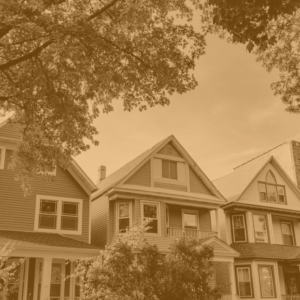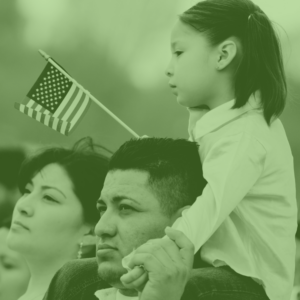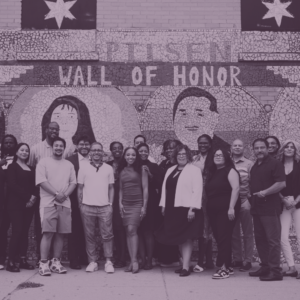Dr. Ana Gil Garcia

Recently, in a mixed audience of citizens of many countries, an American journalist raised his hand and asked to explain how Venezuela, once the richest country in South America, that holds the world’s largest supply of crude oil, became one of the poorest nations among Latin-American countries. The question was difficult to respond without providing a historical, socio-political perspective of the origins of the human tragedy that permeates the country nowadays. What we know, as a fact, is that for 21years, Venezuela has been plummeting toward the worst humanitarian crisis in the Western hemisphere, with more than 4 million people displaced. According to the United Nations, there will be 5.3 million Venezuelan refugees and migrants by the end of 2019. In addition, the average Venezuelan has lost 24 pounds in the past year, and anyone can see people of all ages picking food out of trash on the streets. With a hyperinflation of 1 million percent, Venezuelans are struggling to afford food because the average salary is just $5 per month.
The manmade humanitarian crisis has led to massive flight from Venezuela. Colombia, for instance, has received the largest number of immigrants since 2014, reaching up to 1 million Venezuelans. The United States has about 400.000 Venezuelans, fewer than any other country in the region. Yet, Venezuelans have constituted the largest group of asylum seekers in the U.S. for the first time ever, surpassing China.
Recently, the UN High Commissioner for Refugees (UNHCR) took the position that Venezuelans must be given refugee status in any country they flee to.
The roots of the humanitarian crisis are multiple and varied. Venezuela is a privileged country that sits atop of one of the biggest petroleum reserves in the world, a natural unrenewable resource that once upon a time was used widely and wisely for the development of the country educationally and economically speaking. Venezuela had become one of the icons of democracies in the Americas. In 1950, it was the world’s 4th wealthiest nation per capita. In 1960, the country produced more than 10 percent of the world’s crude with a GDP higher than Brazil, Colombia and comparable to the U.S.
The nation, 10 years later, lived a nonstop bonanza with strong democracy that allowed the expansion of the traditionally free educational system K-21, free health care, loaded food chains and supplies at low cost. It is important to mention that Venezuela had the largest scholarship program fully financed by oil revenue in the world, Programa Mariscal de Ayacucho. In fact, the U.S. was one of the major beneficiaries of the program with 50.000 Venezuelan international students.
The arrival of the dictator, Hugo Chavez, in 1998, marked the initiation of radical socialist promises to the most vulnerable sector of the society, the extreme poor, which comprised 20 percent of the population. Before Chavez, Venezuela enjoyed a Middle Class of professionals that were responsible for sustaining the economy of the nation. Just two decades later, Venezuela’s Middle Class has completely collapsed and nearly 90 percent of its population is in extreme poverty.
Chavez’s gross mismanagement was unparalleled. With a very small population of not more than 27 million people, Chavez neglected to deliver the promises of building a prosperous country with zero poverty level, with pristine health system for all, with high industrial and manufacturing development, employment at all levels, continuation of high quality education, expansion of agriculture programs, among many others socio-economic indicators. Land and industry expropriations as well as nationalization of private corporations and firms forced more than 5,000 businesses to leave the country. Chavez’s interventionist model caused food production to collapse. It is true that the crisis has intensified under the successor, Maduro’s regime, but it was Chavez’s interventionist model that sent this nation spiraling into economic collapse.
Changes in the constitution allowed the regime to remain in power longer than it used to be. There were no time restrictions for reelection, every six years the president could be reelected as he wished. The central spirit of the legal system allowed the government to concentrate all powers without any checks and balances. Any individual, in disagreement with government policies, was either incarcerated or deported. The repression was institutionalized and legally enforced. Fear, terror, distress and panic were practices infused in the population. Many local elections were executed and not one election was lost by the government, except one.
The communist rhetoric of blaming others for their failures has proven to be effective in barrios. Unfortunately, due to the hyperinflation, poor people have become poorer and wallowed in extreme misery.
Most government agencies stopped issuing yearly reports. Therefore, it has become difficult to find official data. However, there is an unofficial accountability system created by many organizations among them: CODEVIDA, Effecto Cocuyo, Accion Solidaria, and other private organizations that have presented numerical estimates of the current crisis. In using a summary of the unofficial data, by comparison, in 1989 the country had an inflation rate of 81 percent and minimum salary of $118. The Venezuela of today has an inflation rate of 1.300.000 percent, a minimum wage of $5.45 and critical poverty level of 94 percent. Put this information in context, the salary of an individual is $5.45 but the cost of a bottle of aspirin is $16.90!
It is obvious why Venezuelans are in dire need of humanitarian aid.
In a special report provided by the not-for-profit organizations Effecto Cocuyo (Venezuela Without Numbers), Codevida and Accion Solidaria (2018) unofficial data revealed the alarming medical crisis. The report said that more than 140,000 people have cancer and more than 300.000 have heart disease and are at serious risks for not receiving treatments. More than 300,000 people with chronic disease such as Parkinsons and hemophilia have been deprived of treatment since 2016 and more than 79,000 people with HIV have stopped receiving treatment since 2017, leading to 5,000 patients who have lost their lives. Three-thousand people died in 2017-2018 for not receiving dialysis.
The Venezuelan tragedy should be a lesson and a warning to all countries that mismanagement of resources, political malpractices, educational ignorance, and concentration of power are recipes for national crisis.
After 21 long years of oppression and hunger, Venezuelans are putting their hopes in Juan Guaido, President of the National Assembly. More than 80 countries, including the United States, recognize him as Venezuela’s legitimate leader after disputed elections in May 2018, in which Maduro proclaimed himself as the only winner, even though no other parties were allowed to participate. On January 5, the new board of directors of the National Assembly, ratified the annulment of the presidential election process of 2018 and declared the absence of the president including the usurpation of the presidential functions by Nicolas Maduro. According to the Constitution of Venezuela, the President of the National Assembly assumes the interim responsibility to conduct the government. Under the existing circumstances, 85 percent of Venezuelans are backing up Guaido, but Maduro is not going without a fight.
The worldwide campaign for humanitarian aid is one of the three actions that the new interim government has undertaken. The other two actions are related to free transparent elections and process of transition and restoration of the democracy.
On February 23, the U.S. sent medicine, food and hygiene products to Venezuela. However, Maduro’s forces intercepted and burned supply trucks making their way across the Colombian and Brazilian borders.
Meanwhile, a nonprofit organization was created to serve an estimated 13,000 Venezuelans living in Illinois The Illinois Venezuelan Alliance (IVA), operating from Chicago, has targeted four important aspects of the lives of the Venezuelan immigrants: civic engagement, educational actions, charitable efforts and political activism.
The IVA has also offered support by informing them on immigration policies, housing rights, employment, health tips, food pantries, shelters, school regulations, ESL programs, higher education scholarships, furniture, clothing, among many other needs that the new immigrant community needs to settle down in Illinois. The IVA has worked closely with legislators at all levels to grant temporary protected status to Venezuelans and create a broader, burden-sharing arrangement for processing those seeking asylum. The IVA has also shipped food and medicine to seven organizations in Venezuela including nursing homes, children hospitals, and school organizations that provide one meal a day to starving children there.




